Are you a Quiet Speculation member?
If not, now is a perfect time to join up! Our powerful tools, breaking-news analysis, and exclusive Discord channel will make sure you stay up to date and ahead of the curve.
Following the success of last week’s article comparing Legacy to Modern prices, I want to take a look at some other questions about Modern finance. We had a lot of requests in the comments, both on this site and on others where the article appeared, but one stood out as more important than the rest: rising Modern prices. We’ve all heard about Modern prices spiking since the beginning of the year. Some of us may even have experienced it, especially if you were trying to arm your sideboard with Blood Moon for the June Grand Prix season. One of the biggest contributors to this interpretation of Modern was an MTG Goldfish article about prices rising 25% since January. In this article, I want to perform my own analysis of the Modern data to see if that 25% claim holds water.
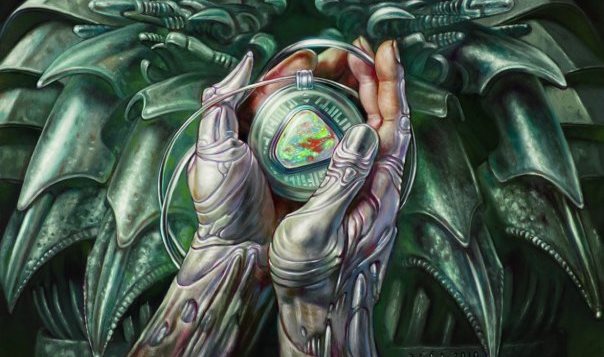
One of the biggest problems in comparing Modern prices between time periods is metagame shifts. If a deck becomes more or less competitive/popular, this often has an effect on its price from month to month. These shifts can artificially increase or decrease a price difference, which need to be accounted for. Instead of asking about price increase for specific cards, I want to focus on the increase for decks and the overall metagame. Does it cost the same amount of money to be competitive in Modern today as it did in January? Does a tiered deck from January cost as much as the August version? This article answers these questions to see if Modern really has become more expensive.
[wp_ad_camp_1]
Methodology
The biggest success in the MTG Goldfish article was putting concrete numbers to an otherwise intangible (even baseless) claim about rising Modern prices. Everyone felt like Modern prices skyrocketed (just look 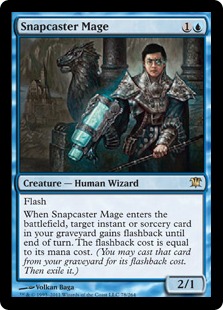 at Snapcaster Mage, Liliana of the Veil, Cavern of Souls, etc.), but there weren’t a lot of evidence-based analyses to support this general sentiment. In that respect, the MTG Goldfish article helped ground us in the data. Unfortunately, it also had some misleading characterizations which blunted the analysis. Decks like Elves and Grishoalbrand were tier 3 or lower back in January. Grixis Control, Twin, and Delver didn’t exist at all because neither Tasigur nor Kolaghan’s Command were around to make them work. Many wondered why decks like this were included. True, these lists may have seen January to August price increases, but that doesn’t necessarily mean the entire format is spiking. As one popular deck rises in price, perhaps another falls. Maybe different cards are used now versus in January. Because of these nuances, such decks become an odd point of comparison when trying to see how Modern prices have changed over time.
at Snapcaster Mage, Liliana of the Veil, Cavern of Souls, etc.), but there weren’t a lot of evidence-based analyses to support this general sentiment. In that respect, the MTG Goldfish article helped ground us in the data. Unfortunately, it also had some misleading characterizations which blunted the analysis. Decks like Elves and Grishoalbrand were tier 3 or lower back in January. Grixis Control, Twin, and Delver didn’t exist at all because neither Tasigur nor Kolaghan’s Command were around to make them work. Many wondered why decks like this were included. True, these lists may have seen January to August price increases, but that doesn’t necessarily mean the entire format is spiking. As one popular deck rises in price, perhaps another falls. Maybe different cards are used now versus in January. Because of these nuances, such decks become an odd point of comparison when trying to see how Modern prices have changed over time.
I want to run a different kind of analysis in this article, accounting for metagame shifts on top of price changes. To do this, I look at the tier 1 and tier 2 decks from both the January 2015 metagame and that of August 2015. I find representative lists for of all the decks, focusing on the highest finisher from the biggest event in the time period (also looking for representative card choices and not too much weird tech: no Myr Enforcers in Affinity). After identifying these lists, I calculate deck costs using TCGPlayer middle prices from either January 1, 2015 or August 1, 2015. This method shows how much it cost to be competitive, i.e. play a tiered deck, during that particular metagame. Naturally, there are specific list changes between January and August to reflect the different metagame contexts. This is actually good: we want to calculate costs for the different lists. A competitive list in January might not be a competitive list in August, so if we want to calculate price differences for competitive decks, we need to accept variance in the cards played.
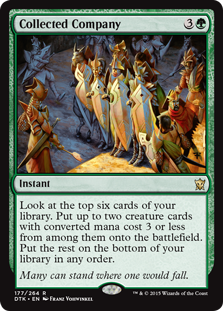 Why not look at exact lists and their changes between January and July? Although this method would certainly show price differences in cards, it doesn’t answer the fundamental question of Modern as a format being more or less expensive. No one really cares if Heritage Druid as a card spikes after Collected Company gets printed. They care that to play a tier 2 Modern deck (Elves), you now need to fork out a lot of money for its cards. The emphasis is on the decks that play cards, not cards themselves. List changes reflect the different requirements of competitive Modern, and that’s what players really care about when they ask about rising format prices. Of course, in answering the question about rising Modern deck and metagame prices, we’ll also get at the underlying issue of card prices.
Why not look at exact lists and their changes between January and July? Although this method would certainly show price differences in cards, it doesn’t answer the fundamental question of Modern as a format being more or less expensive. No one really cares if Heritage Druid as a card spikes after Collected Company gets printed. They care that to play a tier 2 Modern deck (Elves), you now need to fork out a lot of money for its cards. The emphasis is on the decks that play cards, not cards themselves. List changes reflect the different requirements of competitive Modern, and that’s what players really care about when they ask about rising format prices. Of course, in answering the question about rising Modern deck and metagame prices, we’ll also get at the underlying issue of card prices.
January and August Metagame Comparison
Let’s start with the January 2015 metagame. As many of you probably remember, this was a format completely shaped by Treasure Cruise and Birthing Pod, and a very different one from our Modern of today. Before tracking data as part of the Nexus Top Decks page, I tracked it on spreadsheets for the Salvation Modern forums (our data still informs those forums). The table below reflects those metagame numbers (unweighted MTGO/Paper average), showing deck prevalence in the October 1, 2014 through January 1, 2015 periods, along with the January 2015 prices of those decks. It also shows average deck price for tier 1 decks in the time (anything with 4%+ of the metagame), tier 2 decks, and the overall metagame.
January 2015 Metagame Prices
| Deck | January 2015 Metagame % | Metagame Tier | Janaury 2015 Deck Price |
|---|---|---|---|
| UR Delver | 11.7% | Tier 1 | $525.70 |
| Melira Pod | 10.2% | Tier 1 | $746.10 |
| Burn | 8.1% | Tier 1 | $582.60 |
| Affinity | 7.4% | Tier 1 | $597.30 |
| Scapeshift | 6.6% | Tier 1 | $771.60 |
| Abzan | 4.3% | Tier 1 | $1,690.50 |
| Merfolk | 3.3% | Tier 2 | $408.90 |
| UR Twin | 3.2% | Tier 2 | $925.80 |
| UWR Control | 2.5% | Tier 2 | $959.20 |
| Bogles | 2.4% | Tier 2 | $549.20 |
| RG Tron | 2.4% | Tier 2 | $583.90 |
| Temur Delver | 2.3% | Tier 2 | $1,372.90 |
| UWR Midrange | 2.2% | Tier 2 | $945.70 |
| UWR Delver | 1.6% | Tier 2 | $582.90 |
| Naya Zoo | 1.6% | Tier 2 | $1,388.20 |
| Jeskai Ascendancy | 1.5% | Tier 2 | $637.30 |
| Infect | 1.2% | Tier 2 | $664.60 |
| Kiki Pod | 1.1% | Tier 2 | $879.60 |
Tier 1 metagame (1/1) average: $818.97
Tier 2 metagame (1/1) average: $824.85
Overall metagame (1/1) average: $822.89
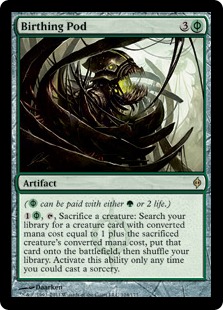 It’s interesting that there aren’t any substantial differences between the tier 1, tier 2, and overall metagame prices. In fact, they are all within a remarkable $10 of each other. The most expensive tier 1 deck was Abzan, followed by Naya Zoo and Temur Delver in tier 2. The least expensive tier 1 decks were Burn and UR Delver, with Affinity close behind. For the most part, these decks are all clustered closely around $822, with all but one of the six tier 1 decks actually falling beneath that pricepoint. The two “best” decks at the time, UR Delver and Melira Pod, were well under the $822 average, suggesting you could be highly competitive in Cruise/Pod-era Modern without spending as much as most people were paying for their less competitive builds.
It’s interesting that there aren’t any substantial differences between the tier 1, tier 2, and overall metagame prices. In fact, they are all within a remarkable $10 of each other. The most expensive tier 1 deck was Abzan, followed by Naya Zoo and Temur Delver in tier 2. The least expensive tier 1 decks were Burn and UR Delver, with Affinity close behind. For the most part, these decks are all clustered closely around $822, with all but one of the six tier 1 decks actually falling beneath that pricepoint. The two “best” decks at the time, UR Delver and Melira Pod, were well under the $822 average, suggesting you could be highly competitive in Cruise/Pod-era Modern without spending as much as most people were paying for their less competitive builds.
How does all of this compare to the August 2015 metagame? Without stealing the thunder of my upcoming metagame breakdown article (coming up on Wednesday!), here are the current deck shares for the 7/1-8/1 metagame, broken down by tier and priced out with TCG mid values from 8/1. No one should be surprised to see an overall increase in the prices relative to January: even the most anecdotal price analysis would show this. You might be more surprised, however, to see a familiar number at the end of the graph when comparing the average format price on 8/1 to the old one on 1/1.
August 2015 Metagame Prices
| Deck | August 2015 Metagame % | Metagame Tier | August 2015 Deck Price |
|---|---|---|---|
| Jund | 8.8% | Tier 1 | $1,922.47 |
| Burn | 8.4% | Tier 1 | $594.24 |
| Affinity | 8.3% | Tier 1 | $759.41 |
| Grixis Control | 5.4% | Tier 1 | $1,188.10 |
| UR Twin | 5.3% | Tier 1 | $1,311.72 |
| Grixis Twin | 4.9% | Tier 1 | $1,229.10 |
| Merfolk | 4.9% | Tier 2 | $499.22 |
| RG Tron | 4.1% | Tier 1 | $800.51 |
| Amulet Bloom | 3.4% | Tier 2 | $640.94 |
| Abzan | 3.4% | Tier 2 | $1,918.67 |
| Infect | 3.4% | Tier 2 | $728.10 |
| Grixis Delver | 3.1% | Tier 2 | $957.96 |
| Abzan Company | 2.8% | Tier 2 | $867.63 |
| Temur Twin | 2.3% | Tier 2 | $1,710.71 |
| Naya Company | 2.2% | Tier 2 | $1,411.97 |
| Elves | 2.1% | Tier 2 | $598.78 |
| Grishoalbrand | 2.0% | Tier 2 | $755.56 |
| Scapeshift | 1.9% | Tier 2 | $836.51 |
Tier 1 metagame (8/1) average: $1,115.08
Tier 2 metagame (8/1) average: $993.28
Overall metagame (8/1) average: $1,040.64
Different method, same result. If you wanted to play competitive Modern in January 2015, your average deck would cost you about $822. What about August 2015? $1040, roughly a 26% increase in the intervening period. This increase is reflected across the 8/1 metagame, impacting both pricy decks like Jund and cheaper ones like Merfolk and Affinity. The new tier 1 deck price average is around $1115, which amounts to a sizable 36% price increase relative to the January tier 1 decks. The tier 2 deck cost also increased, but not by the same margin: only 20%, up from $827 to $993. The table below summarizes these three points of comparison.
January to August 2015 Price Changes
| Analysis | January 2015 Metagame | August 2015 Metagame | % Change in Price |
|---|---|---|---|
| Average Price | $822.89 | $1,040.64 | +26.5% |
| Tier 1 Price | $818.97 | $1,115.08 | +36.2% |
| Tier 2 Price | $824.85 | $993.28 | +20.4% |
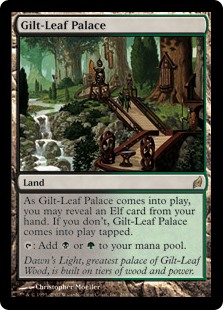 This analysis suggests the Modern price increase is more consistent and comprehensive than many acknowledge. It’s one thing if card prices are increasing as a result of speculation or fringe decks. Gilt-Leaf Palace spiked about 1000% in June, yet you only see a handful of Elves decks running it. It also doesn’t really matter if Grixis prices increased from January to August because those decks saw zero play until after Pro Tour Fate Reforged. Those kinds of increases are either expected and/or irrelevant in determining the real cost of Modern play, especially if not accounting for prices that may have fallen in the same time period. It’s something else entirely if all the tier 1 and tier 2 decks are as a whole more expensive in August than they were in January. This means the cost of competitiveness has increased, not just the cost of a few staples. It also shows that price increases are being felt by players at all levels, not just investors and those who are netdecking a top three deck like Burn, Jund, or Twin.
This analysis suggests the Modern price increase is more consistent and comprehensive than many acknowledge. It’s one thing if card prices are increasing as a result of speculation or fringe decks. Gilt-Leaf Palace spiked about 1000% in June, yet you only see a handful of Elves decks running it. It also doesn’t really matter if Grixis prices increased from January to August because those decks saw zero play until after Pro Tour Fate Reforged. Those kinds of increases are either expected and/or irrelevant in determining the real cost of Modern play, especially if not accounting for prices that may have fallen in the same time period. It’s something else entirely if all the tier 1 and tier 2 decks are as a whole more expensive in August than they were in January. This means the cost of competitiveness has increased, not just the cost of a few staples. It also shows that price increases are being felt by players at all levels, not just investors and those who are netdecking a top three deck like Burn, Jund, or Twin.
Deck-to-Deck Comparison
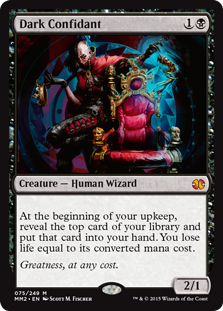 This January to August breakdown isn’t the only way to analyze the price issue at the metagame level. We can also look at individual decks in the different time periods, similar to MTG Goldfish’s approach. Except this time, I don’t want to look at the same lists from metagame to metagame: this doesn’t account for the different requirements of playing the deck at any given time in Modern. Instead, we’ll look at pairs of distinct lists from the two distinct time periods, checking the January price for one and the August price for the other. For instance, January Jund was an underplayed deck which didn’t even run Dark Confidant, due to all of the Burn and Delver out there. By contrast, August Jund practically requires Bob.
This January to August breakdown isn’t the only way to analyze the price issue at the metagame level. We can also look at individual decks in the different time periods, similar to MTG Goldfish’s approach. Except this time, I don’t want to look at the same lists from metagame to metagame: this doesn’t account for the different requirements of playing the deck at any given time in Modern. Instead, we’ll look at pairs of distinct lists from the two distinct time periods, checking the January price for one and the August price for the other. For instance, January Jund was an underplayed deck which didn’t even run Dark Confidant, due to all of the Burn and Delver out there. By contrast, August Jund practically requires Bob.
To gather more datapoints, I expanded this analysis to include decks that were tier 1 or 2 in only one period (e.g. Bogles in January 2015 or Jund in August 2015) and not as well-represented in the other. The percent difference between list prices is also given.
January to August 2015 Deck Price Comparison
| Deck | January 2015 Price | August 2015 Price | % Change in Price |
|---|---|---|---|
| Burn | $582.60 | $594.24 | +2.0% |
| Affinity | $597.30 | $759.41 | +27.1% |
| Scapeshift | $771.60 | $836.51 | +8.4% |
| Abzan | $1,690.50 | $1,918.67 | +13.5% |
| Merfolk | $408.90 | $499.22 | +22.1% |
| UR Twin | $925.80 | $1,311.72 | +41.7% |
| RG Tron | $583.90 | $800.51 | +37.1% |
| Infect | $664.60 | $728.10 | +9.6% |
| Amulet Bloom | $381.48 | $640.94 | +68.0% |
| Bogles | $549.20 | $580.66 | +5.7% |
| UWR Control | $959.20 | $986.57 | +2.9% |
| UWR Midrange | $945.70 | $1,166.01 | +23.3% |
| Jund | $1,618.60 | $1,922.47 | +18.8% |
| Temur Twin | $1,795.90 | $1,710.71 | -4.7% |
Even breaking the data down this way, we still see a roughly 20% price increase from January 2015 to August 2015. With the exception of Temur Twin (Tarmogoyf‘s reprinting helped here), every single deck increased in price. Amulet Bloom is a big outlier here with a 68% spike from January 2015, but even if we remove it from the picture, we are still looking at a 16% price increase between lists. This only confirms our suspicions about a real increase in the price of competitive Modern. If you wanted to play one of these decks in August 2015, the successful lists would cost you 20% more than the old version would have cost in January. Note this is in spite of Modern Masters 2015 reprints, many of which targeted these competitive decks in an effort to lower their prices. Although cards like Goyf, Twin, Spellskite, and others may have benefited from the set, the decks playing those cards still managed to go up. Popularity is, in part, to blame for this, but it’s still a real impact which many Modern players will feel when buying into the format.
Modern Prices From Here?
In the MTG Goldfish case of individual card prices, we saw cards go up by about 25% from January through the summer. Even expanding this analysis to other comparisons, we still see this 20%-25% price spike. Competitive Modern is more expensive in August than it was in January. This is true of tiered decks, the overall competitive metagame, and the January vs. August versions of certain lists. When we have this many datapoints supporting the same conclusion, it’s hard to ignore that conclusion and its impact on the format. Modern prices really do appear to have increased between that 20%-25% range, at least in all the ways that matter. As I said before, I don’t think this is necessarily unexpected, or even necessarily a bad thing. A growing format will almost certainly mean increased prices of non-reprinted staples, in addition to speculation and non-player entities also causing a change.
What do you think of the methods in this article or the findings? Where else do you see Modern prices increasing? Do you see examples that challenge these conclusions? What other finance questions are you interested in?
Modern may be getting more expensive but it’s also getting more popular, and I’m excited to be playing the format at this time. Let me know what you all think in the comments and join us later this week as we look at the July Modern metagame.




And fetchlands just spiked…
Yep, it’s gonna be a long month. I’m sure their reprinting is right around the corner though, so I’m not terribly worried. Wizards has been pretty good with getting ahead of spikes, and I can’t imagine we get into 2016 without some announcement about their being reprinted. Commander pliz?
I wonder also how much the season determines the prices. August is a modern season in the PPTQ range, making it a more played format.
I’m sure this is at play, but it’s not really a factor I would want to control for. Once prices go up in a Modern season, they tend to stay high even after the season has ended. Price memory is very real in Modern. Even after a card drops following an initial spike, it rarely (if ever) falls down to pre-spike levels. It tends to even out somewhere in the 50th to 75th percentile of that price range.